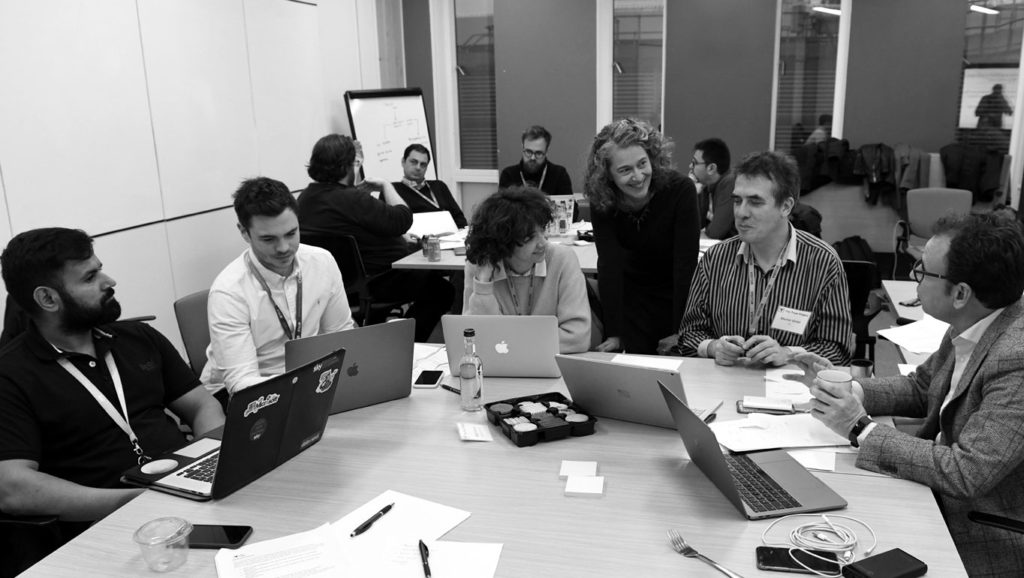Today’s digital information environment may seem like a confusing maze to many. Some give up and go on a ‘news fast’ to avoid so much negative news and the struggle of sorting honesty from hoaxes. Some gravitate to the clear, inviting rhetoric of sites that promote safety and belonging through extremist ideologies and hatred of others. But many, perhaps even most people, do their best to navigate. Increasingly, they know how important it is to stay in touch with news that can help them plan their daily lives, be successful in their ambitions, and even at the most modest level, engage in civic life and democracy.
The Trust Project defines itself as a facilitator towards global news integrity. What does integrity mean for this cause?
When I started the Trust Project in 2014, journalism was finding it very hard to compete within search engines, social media and news aggregators. News outlets tried tricks like clickbait headlines, merging opinion with straight news, and occasionally overlooking the strict division between news and advertising. As a result, trust in news started a steady decline. Into the gap flooded rumor, falsehood and deliberately misleading ‘news’ sites. And along with loss of trust in the press came a dangerous loss of trust in democratic institutions and leaders.
Since then, news organizations have gone back to the basics of ethical reporting, but the damage has been done. We developed the 8 Trust Indicators to respond to people’s concerns about trustworthiness, marrying our research on user needs with journalistic values. Participating news sites display the indicators to show who and what is behind their work. They ensure that journalists have guidelines to avoid conflict of interest, influence by governments or funders, or veering into opinion. News sites that display our Trust Indicators make themselves transparent and accountable to the public. This is what we mean by operating with integrity. Implementing the Trust Indicators strengthens confidence in the site itself and its journalists, according to several studies. That’s the kind of confidence we need to rebuild if we want people to seek out trustworthy information amid so much distraction.
In October 2022, World Media and Information Literacy Week will be celebrated under the theme “Nurturing Trust: A Media and Information Literacy Imperative.” What does this theme mean for The Trust Project?
Media and information literacy is core to a healthy, mutually beneficial society, and trust is central. People must have a shared understanding of basic facts and feel confident that they can rely on the news media to provide those facts fairly and impartially. In our recent research, we discovered a large group of people who truly wished to stay informed but had a great deal of anxiety about being fooled by manipulative sites. They worried about accidentally sharing misinformation. I call this group “the anxious middle.” This is an encouraging finding because this group wants to participate in a healthy news environment. They want to be informed. They want to click and share wisely when online. They appreciate systems like the 8 Trust Indicators or other news literacy tools that can help them easily know what to look for when deciding which news sources to trust.

With the overwhelming amount of information circulating, which segments of society are not thinking critically and clicking wisely?
I don’t think we can single out a particular segment of society. Misinformation thrives on emotion and the kind of inattention common to our hectic modern lives. It’s easy to gravitate to the clickbait or headlines that seem true because we agree with them.
We may be smart, experienced or sophisticated in government affairs and still fall prey. The United Nations campaign for all of us to pause before sharing online news really has it right.
How can all actors (policymakers, educators, information and media professionals, youth organizations, and disadvantaged populations) be brought together so that an element as sensitive as trust can be strengthened?
Obviously, journalists must work with the greatest integrity. They should be transparent about their policies and practices. They should welcome feedback and listen thoughtfully to complaints. They should work harder to be inclusive and fair. But trust is fundamentally a relationship, and each of us has a very important role to play. Youth and community organizations can share their knowledge and insights with journalists and hold them accountable. Policy makers, executives and educators can emphasize the importance of the news media in a healthy society and why it’s worth our time to check our news sources. No one should be a passive onlooker.
What is the borderline between disinformation and the erroneous or voluntary interpretation that a media outlet can give of the same fact?
This would be the difference between disinformation — outright falsehood or lying — and misinformation, when someone passes along something without realizing it’s wrong. Journalists work hard to check their facts, but sometimes they make mistakes. When that happens they will quickly admit the error, correct it, and continue to seek truth while reporting honestly.



